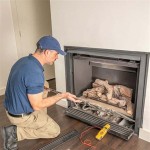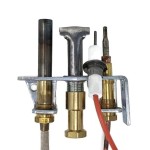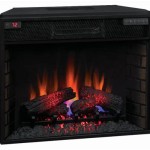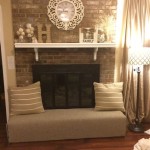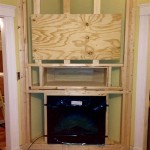Selecting the Right Trim for Your Fireplace Mantel
The fireplace mantel serves as a focal point in many homes, drawing attention and offering a space for decor and personal expression. While the mantel shelf itself is a prominent component, the trim surrounding it plays a vital role in defining its style and enhancing the overall aesthetic of the fireplace. Selecting the appropriate trim requires careful consideration of the home's architectural style, the mantel's existing characteristics, and the desired visual effect.
Fireplace mantel trim encompasses various molding profiles and decorative elements that frame the mantel shelf and legs. This includes components like crown molding, baseboard molding, pilasters, and decorative carvings. The chosen trim helps to blend the mantel seamlessly with the surrounding wall and fireplace surround, creating a cohesive and visually appealing design. The right trim can elevate a simple mantel into a sophisticated architectural feature, or provide a unifying element for a more elaborate fireplace design.
Understanding the Function and Aesthetics of Fireplace Mantel Trim
The primary function of fireplace mantel trim is to provide a visual border and transition between the mantel and the surrounding wall or fireplace surround. This trim helps to define the mantel's shape and size, making it a more prominent feature in the room. Beyond its functional role, trim is also crucial for enhancing the aesthetic appeal of the mantel. It can add detail, texture, and character, complementing the overall design of the fireplace and the room. The specific type of trim chosen can significantly impact the perceived style of the mantel, ranging from classic and traditional to modern and contemporary.
Furthermore, mantel trim can be used to conceal any imperfections at the junction between the mantel and the wall. It provides a clean, finished look, enhancing the overall professionalism and quality of the fireplace installation. Trim can also offer a degree of protection to the mantel edges, preventing damage from everyday wear and tear. In some cases, trim can even be used to integrate hidden wiring for lighting or other electronic components.
Consideration must be given to the proportions of the trim relative to the mantel shelf and the overall fireplace structure. Trim that is too large or too small can appear disproportionate and detract from the fireplace's overall aesthetic. The trim should complement the size and shape of the mantel, creating a balanced and harmonious composition.
Choosing the Right Materials for Fireplace Mantel Trim
The material used for fireplace mantel trim is a critical factor to consider, as it affects the appearance, durability, and cost of the installation. Common materials include wood, MDF (Medium-Density Fiberboard), polyurethane, and composite materials. Each material has unique advantages and disadvantages, making it essential to choose one that aligns with the project's specific needs and budget.
Wood is a classic choice for fireplace mantel trim, offering a natural warmth and beauty. It can be easily stained or painted to match the mantel and the surrounding décor. Different wood species, such as oak, maple, pine, and cherry, offer varying grain patterns and color tones, allowing for a wide range of design options. However, wood is susceptible to moisture damage and can warp or crack over time if not properly sealed and maintained. It is also generally more expensive than other trim materials.
MDF is a more cost-effective alternative to wood, offering a smooth, consistent surface that is ideal for painting. It is less prone to warping and cracking than wood, making it a suitable choice for areas with fluctuating humidity levels. However, MDF is not as durable as wood and can be damaged by excessive moisture. It is also heavier than wood, which can make it more challenging to install. MDF is an engineered product that might contain formaldehyde, so low-VOC options are a good consideration.
Polyurethane trim is a lightweight and durable option that is resistant to moisture, insects, and rot. It can be molded into intricate designs and is available in a wide range of styles and finishes. Polyurethane trim is also relatively easy to install and requires minimal maintenance. However, it lacks the natural warmth and character of wood and may not be suitable for all architectural styles. It's best to use paint specifically formulated for polyurethane trim.
Composite materials offer a blend of the advantages of wood and synthetic materials. They are typically made from a combination of wood fibers and polymers, providing a durable, moisture-resistant, and aesthetically pleasing option. Composite trim is often pre-primed and ready to paint, simplifying the installation process. The cost of composite trim can vary depending on the specific composition and manufacturer.
When selecting the material for fireplace mantel trim, it is important to consider the location of the fireplace, the level of humidity in the room, and the desired aesthetic. For fireplaces in areas with high humidity, moisture-resistant materials like polyurethane or composite trim are recommended. For a more traditional look, wood trim is a classic choice. MDF trim offers a cost-effective option for painted finishes.
Matching Trim Style to Architectural Design
The architectural style of the home is a crucial consideration when selecting fireplace mantel trim. The trim should complement the existing architectural details and enhance the overall aesthetic of the room. Choosing trim that clashes with the home's style can create a jarring and disjointed look. Common architectural styles and their corresponding trim recommendations include:
Traditional Styles:
Homes with traditional architectural styles, such as Colonial, Victorian, or Georgian, typically feature ornate and detailed trim. Crown molding with intricate carvings, fluted pilasters, and dentil molding are common choices. Wood trim, stained or painted in classic colors, is a popular option for these styles. The trim often includes multiple layers and elaborate profiles, adding depth and dimension to the mantel.Modern Styles:
Modern and contemporary homes often feature minimalist and streamlined trim. Simple, clean lines and geometric shapes are characteristic of these styles. Flat trim or trim with a slight bevel is commonly used, creating a sleek and understated look. MDF trim, painted in neutral colors, is a popular choice for modern mantels. The focus is on functionality and simplicity, with minimal ornamentation.Rustic Styles:
Rustic homes, such as farmhouses and cabins, often feature natural and unrefined trim. Rough-hewn wood, exposed knots, and natural textures are characteristic of these styles. Simple, unadorned trim is typically used, allowing the natural beauty of the wood to shine through. Stained wood trim or reclaimed wood is a popular choice for rustic mantels. The goal is to create a warm and inviting atmosphere with a focus on natural materials.Craftsman Styles:
Craftsman homes often feature a blend of natural materials and handcrafted details. Square or rectangular trim with simple, clean lines is characteristic of these styles. Wood trim, stained in natural colors, is a popular choice. The trim often includes exposed joinery and minimal ornamentation, showcasing the craftsmanship of the design.In addition to the architectural style, consider the existing details of the mantel itself. If the mantel already has elaborate carvings or details, choose trim that complements these features without overwhelming them. If the mantel is simple and understated, trim can be used to add visual interest and personality. The goal is to create a cohesive and balanced design that enhances the overall aesthetic of the fireplace and the room.
It is also essential to consider the scale of the room when selecting trim. In a small room, overly ornate or large trim can feel overwhelming. Conversely, in a large room, delicate or small trim may get lost and fail to make a significant impact. Choose trim that is proportional to the size of the room and the mantel itself, ensuring a balanced and harmonious design.
When unsure, consulting with an interior designer or architect can provide valuable guidance in selecting the right trim for a fireplace mantel. These professionals can assess the home's architectural style, the mantel's existing characteristics, and the desired aesthetic, and recommend trim options that align with the project's specific needs and goals. They can also provide assistance with installation and ensure that the trim is properly integrated into the overall design of the fireplace and the room.

Fireplace Mantel Design And Creation By Jl Molding In New Jersey

Fireplace Mantels Molding Remodel Simple

Fireplace Mantel Trim Team Woodworking Molding And Baseboards Mantels

Adding Grace And Charm With Fireplace Mantels Inviting Home

Makeover Fireplace This Winter To Look Good For Summer Intrim Mouldings

Diy Fireplace Makeover Part One Updating Mantel Moldings Remodelaholic

Diy Farmhouse Trim Above The Fireplace Top Shelf

Adding Visual Interest And Height To Your Fireplace Remodelando La Casa

Fireplace Mantel Design And Creation By Jl Molding In New Jersey

Super Simple Mantel

